 Technology peripherals
Technology peripherals AI
AI Detailed explanation of Latte: the world's first open source Vincent video DiT launched at the end of last year
Detailed explanation of Latte: the world's first open source Vincent video DiT launched at the end of last yearWith the successful launch of Sora, the video DiT model has attracted widespread attention and discussion. Designing stable and very large-scale neural networks has always been a focus of research in the field of vision generation. The success of the DiT model brings new possibilities for scaling image generation.
However, due to the highly structured and complex nature of video data, extending DiT to the field of video generation is a challenging task. A team composed of research teams from the Shanghai Artificial Intelligence Laboratory and other institutions answered this question through large-scale experiments.
In November last year, the team had released a self-developed model called Latte, whose technology is similar to Sora. Latte is the world's first open source Wensheng video DiT and has received widespread attention. Many open source frameworks such as Open-Sora Plan (PKU) and Open-Sora (ColossalAI) are using and referring to Latte's model design.

- ##Open source link: https://github.com/Vchitect/Latte
- Project homepage: https://maxin-cn.github.io/latte_project/
- Paper link: https:/ /arxiv.org/pdf/2401.03048v1.pdf
Let’s first look at Latte’s video generation effect.

Method introduction
In general, Latte contains two key modules: pre-trained VAE and video DiT. In the pre-trained VAE, the encoder is responsible for compressing the video from pixel space to latent space frame by frame, while the video DiT is responsible for extracting tokens and performing spatiotemporal modeling to process the latent representation. Finally, the VAE decoder maps the features back Pixel space to generate video. In order to obtain the best video quality, the researchers focused on two important aspects in Latte design, namely the overall structural design of the video DiT model and the best practice details of model training.
(1) Latte overall model structure design study

Figure 1 . Latte model structure and its variants
The author proposed 4 different Latte variants (Figure 1), and designed two Transformer modules from the perspective of spatiotemporal attention mechanism. Two variants (Variant) were studied in each module:
1. Single attention mechanism module, in each module only Contains time or space attention.
- Space-time interleaved modeling (Variant 1): The time module is inserted after each space module.
- Space-time sequential modeling (Variant 2): The time module is placed entirely after the space module.
2. Multiple attention mechanism module, each module contains both temporal and spatial attention mechanisms (Open-sora reference Variants).
- Serial spatiotemporal attention mechanism (Variant 3): Serial modeling of spatiotemporal attention mechanism.
- Parallel spatiotemporal attention mechanism (Variant 4): Parallel modeling and feature fusion of spatiotemporal attention mechanism.
Experiments show that (Figure 2), by setting the same parameter amounts for the four model variants, variant 4 has better performance in FLOPS than the other three variants. There is an obvious difference, so the FVD is also relatively the highest. The other three variants have similar overall performance. Variant 1 achieved the best performance. The author plans to conduct a more detailed discussion on large-scale data in the future.

Figure 2. Model structure FVD
(2) Latte model and training details Exploring the optimal design (The best practices)
In addition to the overall structure design of the model, the author also explored factors that affect the generation effect in other models and training.
1.Token extraction: Two methods, single-frame token (a) and spatio-temporal token (b), were explored. The former only compresses tokens at the spatial level, while the latter compresses spatio-temporal information at the same time. Experiments show that single-frame token is better than spatio-temporal token (Figure 4). Comparing with Sora, the author speculates that the spatio-temporal token proposed by Sora is pre-compressed in the time dimension through video VAE, and similar to Latte's design in the latent space, only single-frame token processing is performed.

Figure 3. Token extraction method, (a) single frame token and (b) space-time token

Figure 4. Token extraction FVD
2. Conditional injection mode: Exploring (a) S-AdaLN and (b) all tokens two ways (Figure 5). S-AdaLN converts condition information into variables in normalization and injects it into the model through MLP. The All token form converts all conditions into a unified token as input to the model. Experiments have shown that the S-AdaLN method is more effective in obtaining high-quality results than all tokens (Figure 6). The reason is that S-AdaLN enables information to be injected directly into each module. However, all token needs to pass conditional information from the input to the end layer by layer, and there is a loss in the process of information flow.


3.
Space-time position encoding: Explore absolute position encoding and relative position encoding. Different position encodings have little impact on the final video quality (Figure 7). Due to the short generation duration, the difference in position encoding is not enough to affect the video quality. For long video generation, this factor needs to be reconsidered.

4.
Model initialization : Explore the impact of using ImageNet pre-training parameter initialization on model performance. Experiments show that the model initialized using ImageNet has a faster convergence speed, however, as the training proceeds, the randomly initialized model achieves better results (Figure 8). The possible reason is that there is a relatively large distribution difference between ImageNet and the training set FaceForensics, so it failed to promote the final results of the model. For the Vincent video task, this conclusion needs to be reconsidered. In the distribution of general data sets, the content spatial distribution of images and videos is similar, and the use of pre-trained T2I models can greatly promote T2V.

5.
Image and video joint training: Compress videos and images into a unified token for joint training. The video token is responsible for optimizing all parameters, and the image token is only responsible for optimizing spatial parameters. Joint training has significantly improved the final results (Table 2 and Table 3). Both picture FID and video FVD have been reduced through joint training. This result is consistent with the UNet-based framework [2 ][3] are consistent.
6.Model Sizes: 4 different model sizes were explored, S, B, L and XL (Table 1). Expanding the scale of video DiT will significantly help improve the quality of generated samples (Figure 9). This conclusion also proves the correctness of using the Transformer structure in the video diffusion model for subsequent scaling up.

Figure 9. Model size FVD Author Trained on 4 academic data sets (FaceForensics, TaichiHD, SkyTimelapse and UCF101) respectively. The qualitative and quantitative results (Table 2 and Table 3) show that Latte achieved the best performance, which proves that the overall design of the model is excellent. ##Table 2. UCF101 Image Quality Assessment Table 3. Latte and SoTA video quality evaluation ## Vincent Video Extension Discussion and Summary
Qualitative and quantitative analysis


Latte, as the world’s first open source Vincent video DiT, has achieved promising results, but due to computational There is a huge difference in resources, and there is still a big gap compared with Sora in terms of generation clarity, fluency and duration. The team welcomes and is actively seeking cooperation of all kinds, hoping to use the power of open source to create a self-developed large-scale universal video generation model with excellent performance.
The above is the detailed content of Detailed explanation of Latte: the world's first open source Vincent video DiT launched at the end of last year. For more information, please follow other related articles on the PHP Chinese website!
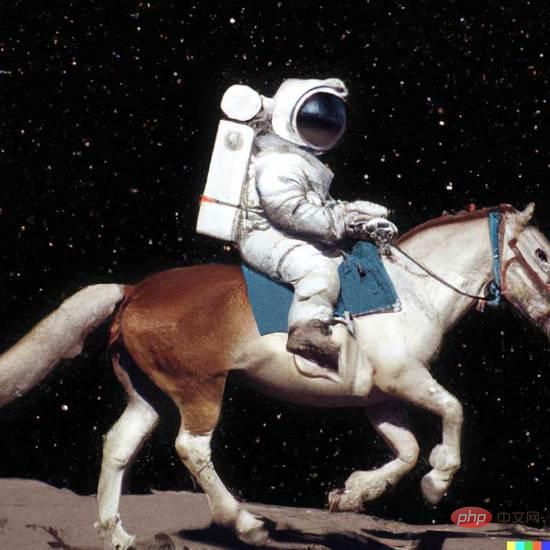 从VAE到扩散模型:一文解读以文生图新范式Apr 08, 2023 pm 08:41 PM
从VAE到扩散模型:一文解读以文生图新范式Apr 08, 2023 pm 08:41 PM1 前言在发布DALL·E的15个月后,OpenAI在今年春天带了续作DALL·E 2,以其更加惊艳的效果和丰富的可玩性迅速占领了各大AI社区的头条。近年来,随着生成对抗网络(GAN)、变分自编码器(VAE)、扩散模型(Diffusion models)的出现,深度学习已向世人展现其强大的图像生成能力;加上GPT-3、BERT等NLP模型的成功,人类正逐步打破文本和图像的信息界限。在DALL·E 2中,只需输入简单的文本(prompt),它就可以生成多张1024*1024的高清图像。这些图像甚至
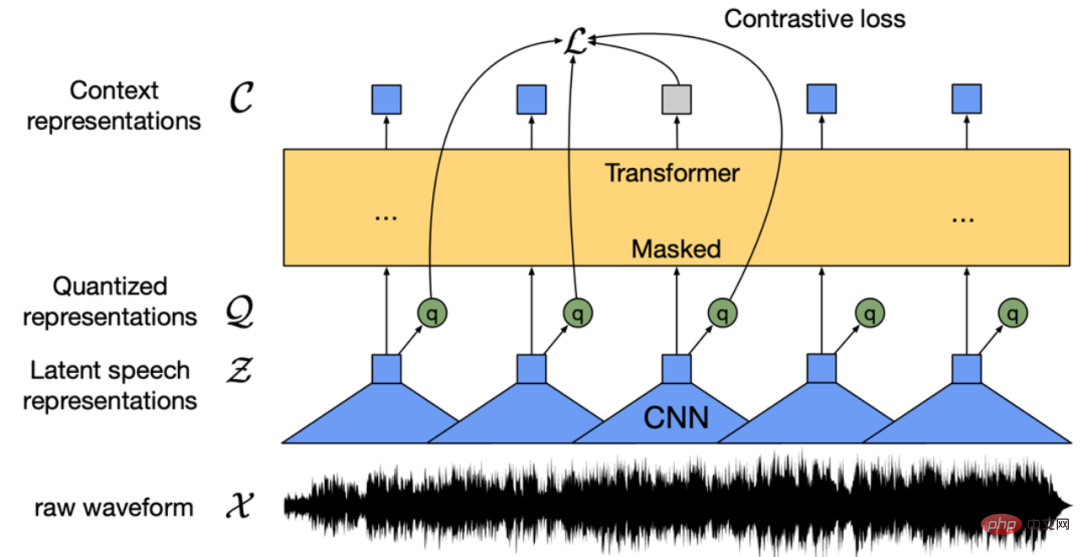 找不到中文语音预训练模型?中文版 Wav2vec 2.0和HuBERT来了Apr 08, 2023 pm 06:21 PM
找不到中文语音预训练模型?中文版 Wav2vec 2.0和HuBERT来了Apr 08, 2023 pm 06:21 PMWav2vec 2.0 [1],HuBERT [2] 和 WavLM [3] 等语音预训练模型,通过在多达上万小时的无标注语音数据(如 Libri-light )上的自监督学习,显著提升了自动语音识别(Automatic Speech Recognition, ASR),语音合成(Text-to-speech, TTS)和语音转换(Voice Conversation,VC)等语音下游任务的性能。然而这些模型都没有公开的中文版本,不便于应用在中文语音研究场景。 WenetSpeech [4] 是
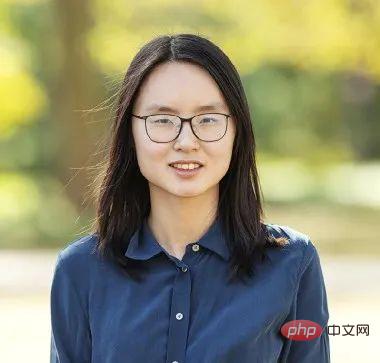 普林斯顿陈丹琦:如何让「大模型」变小Apr 08, 2023 pm 04:01 PM
普林斯顿陈丹琦:如何让「大模型」变小Apr 08, 2023 pm 04:01 PM“Making large models smaller”这是很多语言模型研究人员的学术追求,针对大模型昂贵的环境和训练成本,陈丹琦在智源大会青源学术年会上做了题为“Making large models smaller”的特邀报告。报告中重点提及了基于记忆增强的TRIME算法和基于粗细粒度联合剪枝和逐层蒸馏的CofiPruning算法。前者能够在不改变模型结构的基础上兼顾语言模型困惑度和检索速度方面的优势;而后者可以在保证下游任务准确度的同时实现更快的处理速度,具有更小的模型结构。陈丹琦 普
 解锁CNN和Transformer正确结合方法,字节跳动提出有效的下一代视觉TransformerApr 09, 2023 pm 02:01 PM
解锁CNN和Transformer正确结合方法,字节跳动提出有效的下一代视觉TransformerApr 09, 2023 pm 02:01 PM由于复杂的注意力机制和模型设计,大多数现有的视觉 Transformer(ViT)在现实的工业部署场景中不能像卷积神经网络(CNN)那样高效地执行。这就带来了一个问题:视觉神经网络能否像 CNN 一样快速推断并像 ViT 一样强大?近期一些工作试图设计 CNN-Transformer 混合架构来解决这个问题,但这些工作的整体性能远不能令人满意。基于此,来自字节跳动的研究者提出了一种能在现实工业场景中有效部署的下一代视觉 Transformer——Next-ViT。从延迟 / 准确性权衡的角度看,
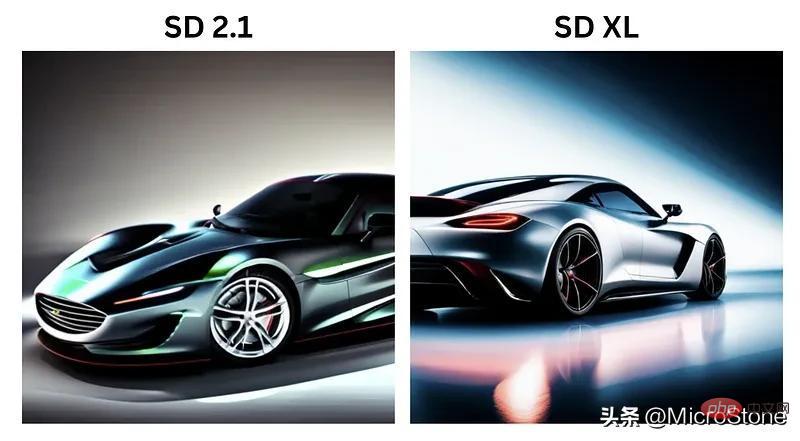 Stable Diffusion XL 现已推出—有什么新功能,你知道吗?Apr 07, 2023 pm 11:21 PM
Stable Diffusion XL 现已推出—有什么新功能,你知道吗?Apr 07, 2023 pm 11:21 PM3月27号,Stability AI的创始人兼首席执行官Emad Mostaque在一条推文中宣布,Stable Diffusion XL 现已可用于公开测试。以下是一些事项:“XL”不是这个新的AI模型的官方名称。一旦发布稳定性AI公司的官方公告,名称将会更改。与先前版本相比,图像质量有所提高与先前版本相比,图像生成速度大大加快。示例图像让我们看看新旧AI模型在结果上的差异。Prompt: Luxury sports car with aerodynamic curves, shot in a
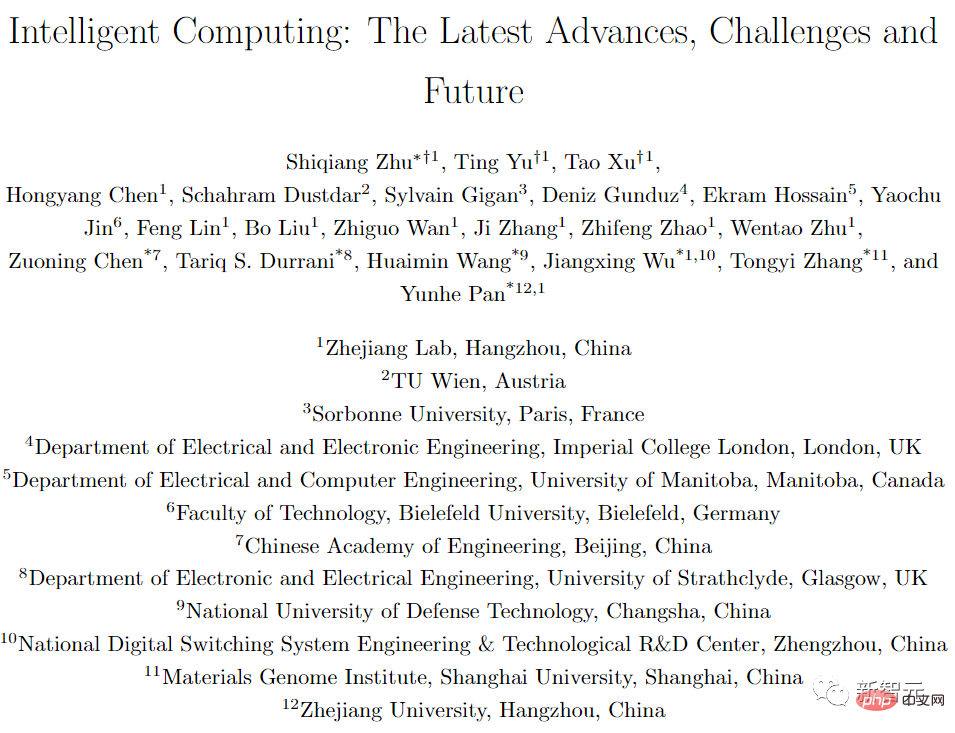 五年后AI所需算力超100万倍!十二家机构联合发表88页长文:「智能计算」是解药Apr 09, 2023 pm 07:01 PM
五年后AI所需算力超100万倍!十二家机构联合发表88页长文:「智能计算」是解药Apr 09, 2023 pm 07:01 PM人工智能就是一个「拼财力」的行业,如果没有高性能计算设备,别说开发基础模型,就连微调模型都做不到。但如果只靠拼硬件,单靠当前计算性能的发展速度,迟早有一天无法满足日益膨胀的需求,所以还需要配套的软件来协调统筹计算能力,这时候就需要用到「智能计算」技术。最近,来自之江实验室、中国工程院、国防科技大学、浙江大学等多达十二个国内外研究机构共同发表了一篇论文,首次对智能计算领域进行了全面的调研,涵盖了理论基础、智能与计算的技术融合、重要应用、挑战和未来前景。论文链接:https://spj.scien
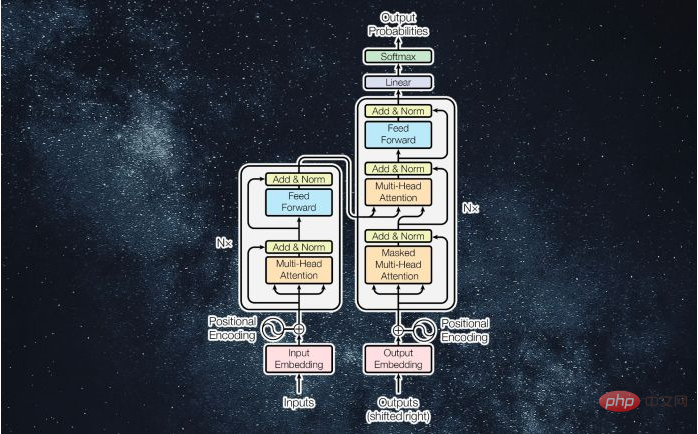 什么是Transformer机器学习模型?Apr 08, 2023 pm 06:31 PM
什么是Transformer机器学习模型?Apr 08, 2023 pm 06:31 PM译者 | 李睿审校 | 孙淑娟近年来, Transformer 机器学习模型已经成为深度学习和深度神经网络技术进步的主要亮点之一。它主要用于自然语言处理中的高级应用。谷歌正在使用它来增强其搜索引擎结果。OpenAI 使用 Transformer 创建了著名的 GPT-2和 GPT-3模型。自从2017年首次亮相以来,Transformer 架构不断发展并扩展到多种不同的变体,从语言任务扩展到其他领域。它们已被用于时间序列预测。它们是 DeepMind 的蛋白质结构预测模型 AlphaFold
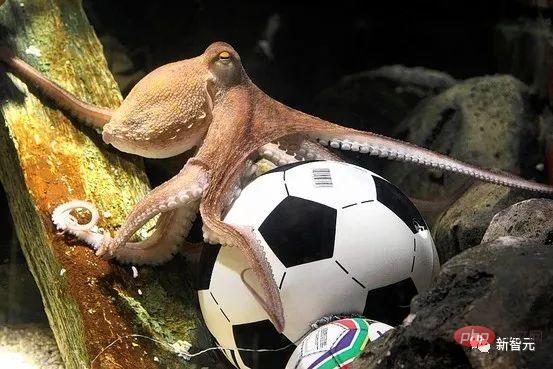 AI模型告诉你,为啥巴西最可能在今年夺冠!曾精准预测前两届冠军Apr 09, 2023 pm 01:51 PM
AI模型告诉你,为啥巴西最可能在今年夺冠!曾精准预测前两届冠军Apr 09, 2023 pm 01:51 PM说起2010年南非世界杯的最大网红,一定非「章鱼保罗」莫属!这只位于德国海洋生物中心的神奇章鱼,不仅成功预测了德国队全部七场比赛的结果,还顺利地选出了最终的总冠军西班牙队。不幸的是,保罗已经永远地离开了我们,但它的「遗产」却在人们预测足球比赛结果的尝试中持续存在。在艾伦图灵研究所(The Alan Turing Institute),随着2022年卡塔尔世界杯的持续进行,三位研究员Nick Barlow、Jack Roberts和Ryan Chan决定用一种AI算法预测今年的冠军归属。预测模型图


Hot AI Tools

Undresser.AI Undress
AI-powered app for creating realistic nude photos

AI Clothes Remover
Online AI tool for removing clothes from photos.

Undress AI Tool
Undress images for free

Clothoff.io
AI clothes remover

AI Hentai Generator
Generate AI Hentai for free.

Hot Article

Hot Tools

Dreamweaver Mac version
Visual web development tools

MantisBT
Mantis is an easy-to-deploy web-based defect tracking tool designed to aid in product defect tracking. It requires PHP, MySQL and a web server. Check out our demo and hosting services.

Notepad++7.3.1
Easy-to-use and free code editor

SAP NetWeaver Server Adapter for Eclipse
Integrate Eclipse with SAP NetWeaver application server.

SublimeText3 Mac version
God-level code editing software (SublimeText3)






